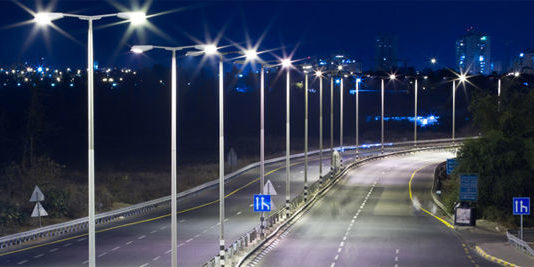The numbers of LED street lights in operation all around the globe today are approximately 300 million and this figure is expected to grow to more than 330 million within the next decade. Traditional street lights utilize technology that is even more efficient than the lights used in our homes. So one would think that switching street lights to LED may not produce as much energy savings as we see LED’s giving us in our homes. However, street lights have to abide by certain requirements for driving and nighttime safety and hence this is an incorrect assumption.
Even with adhering to the street light guidelines, latest inventions of LED street lighting produce approximately 50-60% savings as compared to mercury bulb lighting. Local councils find savings like these to be very attractive in terms of reducing costs while at the same time promoting energy efficiency.
It will be interesting to see how in the near future, cities all around the world will one by one transform their entire street lighting system to LEDs. By 2023, over 95% of all sales for street lights will be the LED form and imagine the amount of energy savings then!
- The amount of energy efficiency achieved by street lights in about a decade or so will be much higher than any domestic and commercial lighting.
- These lights will be available in commercial units and will have the capacity to eliminate light at 400 lumens per watt.
- Even with such high quality lighting, a future LED street light will use only one-thirteenth (6.15W) of the electricity being used by a present day conventional mercury bulb (80W).
- Future street lights will also have inbuilt sensors for ambient lighting which will automatically reduce light emission in the early morning and early evening. Furthermore, it can also detect if the background lighting at nights is high, such as moon light on clear nights, and can then reduce its light emission automatically. Not only does this avoid over illumination but it also cuts down the costs of providing light when it is not really required.
- Predictive forward illumination facilities with auto-dimming will also be available in future LED street lights where a passing person or vehicle can be detected where multiple lights will be present for a short period of time. The auto-dimming feature will once again be activated once that person/vehicle has passed, waiting for the next vehicle to enter the coverage area.
- This smart lighting feature will save an additional 50% on energy because the lights can stay on dim throughout the night and only brighten up when people/vehicles are detected. When the traffic has moved on, all neighboring lights will quietly dim back to low illumination levels. No human intervention is required for the activation of this feature.
- Domestic and commercial LEDs mostly have blue LEDs with layers of phosphorous to make them look white in color. LED street lights will have a combination of red blue and green for lighting up the streets. This approach for using red, blue and green is ideal for the street lighting guidelines which are very different to the kind of light that we live and work under in our residential and commercial spaces.
The brilliant combination of efficient LED street lights that make use of ambient light sensors as well as smart lighting will lead to a 97% reduction in electricity requirements if the whole world were to make this switch by 2020.
Current designs of LED street lights are already known for delivering superior color and brightness as compared to traditional street lights, thereby improving road safety because drivers are easily able to recognize hazards and pedestrians blocking their paths. At LED craft, we are consistently working on improving the designs and technology used in the manufacturing of our LED street lights. We aim at providing the best in terms of quality or products and service to our customers. Visit our website for further details on our available LED street lighting collection.
The future of LED street lights looks bright, with an abundance of opportunities to lighten up dark spaces, giving the public a higher sense of security, while at the same time, reducing light pollution. Some developing countries have not yet seen how roads can be illuminated. Such countries have plenty to look forward to in terms of LED street lights.







